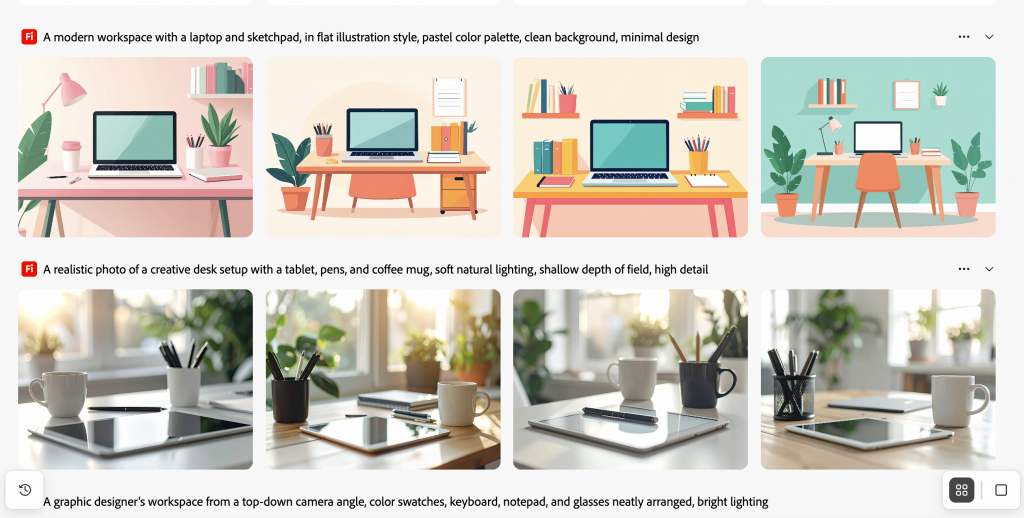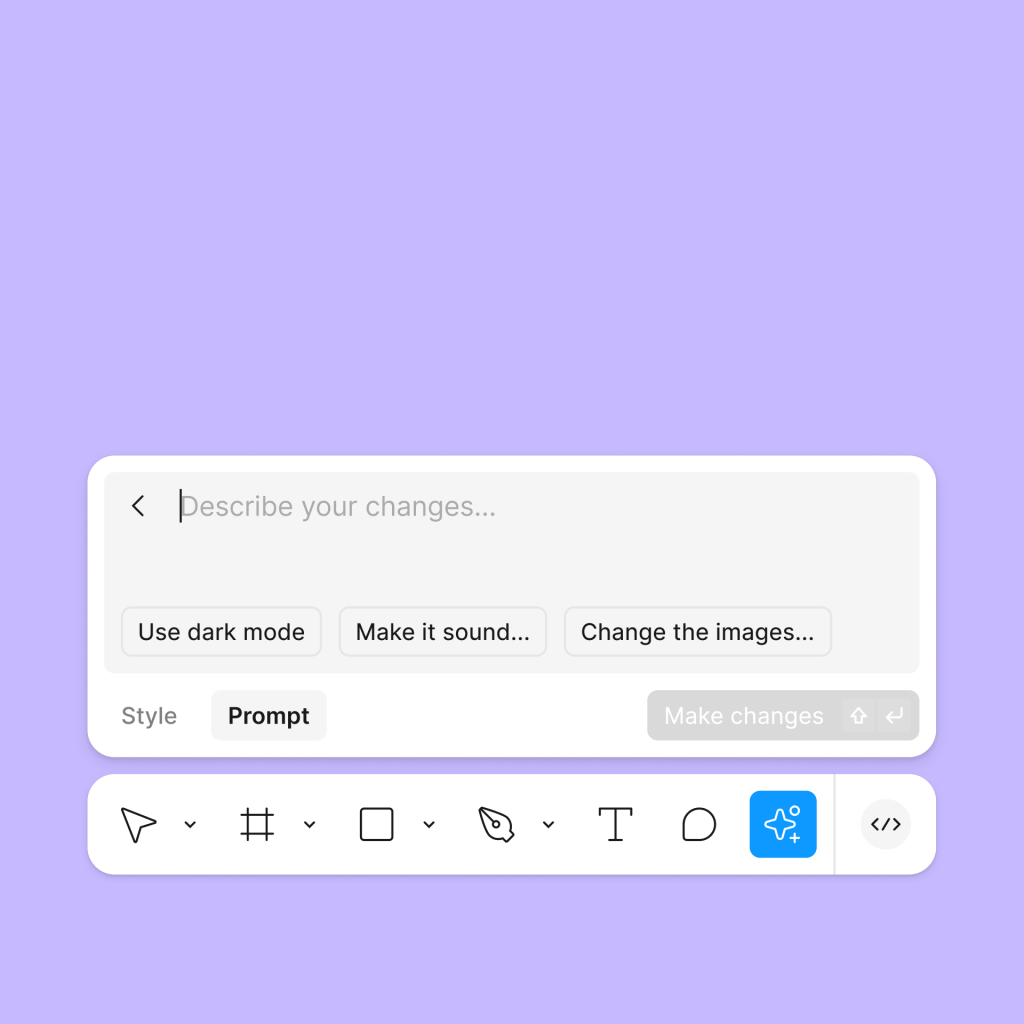AI and Designers: Friends, Foes, or Something in Between?
The design landscape is undergoing a seismic shift. Artificial Intelligence (AI) is no longer a distant concept; it’s an active participant in our creative processes. From generating visuals to optimizing user experiences, AI’s capabilities are expanding rapidly. Yet, amidst this technological evolution, a pressing question arises: Is AI a collaborator enhancing our creativity, or a competitor challenging our roles?
The Integration of AI in Design Workflows
AI’s presence in design is not just theoretical—it’s practical and pervasive. Tools like Adobe Firefly, Figma AI, and Midjourney are transforming how designers approach their work.
- Adobe Firefly: With its latest updates, Firefly offers enhanced realism and creative control, allowing designers to refine details such as style and camera angles.

Adobe Firefly: Prompt-based image generation with visual style previews.
- Figma AI: This tool assists in generating layout suggestions and improving copy in real-time, streamlining the design process.

Figma AI: Contextual prompt editor for quick design changes.
- Midjourney: An AI image generator that creates visuals from natural language prompts, aiding in rapid prototyping and concept development.

Midjourney: Text prompt input using the /imagine command in Discord.
These tools exemplify how AI can augment the designer’s toolkit, handling repetitive tasks and freeing up time for more strategic thinking.
The Human Element in Design
Despite AI’s advancements, certain aspects of design remain inherently human.
- Empathy and Emotional Intelligence: Understanding user needs, emotions, and cultural nuances is a human-centric skill that AI cannot replicate.
- Strategic Decision-Making: Designers make informed choices based on context, brand identity, and user behavior—areas where AI lacks depth.
- Creative Intuition: The ability to generate original ideas and think outside the box is a hallmark of human creativity.
As Jon Friedman, Microsoft’s Corporate Vice President of Design and Research, notes, AI should be embraced as a collaborative tool rather than a replacement, enhancing human creativity and enabling designers to better realise their vision.
Real-World Application: AI as a Creative Partner
Consider a scenario where a design team uses AI to generate initial concepts for a marketing campaign. The AI provides a range of visuals based on the input prompts. However, it’s the designers who curate these outputs, align them with the brand’s voice, and infuse them with emotional resonance. This collaboration showcases AI’s role as a facilitator, not a creator.
The Evolving Role of Designers
The advent of AI is redefining the designer’s role from a sole creator to a curator and strategist. Designers are now expected to:
- Leverage AI Tools: Utilize AI for tasks like data analysis, user behavior prediction, and rapid prototyping.
- Focus on User Experience: Ensure that designs are user-centric, accessible, and emotionally engaging.
- Drive Innovation: Lead the integration of AI into design processes, fostering innovation and efficiency.
This shift emphasizes the importance of adaptability and continuous learning in the design profession.
AI is not a threat to designers but a catalyst for evolution. By embracing AI as a collaborative partner, designers can enhance their creative capabilities, streamline workflows, and deliver more impactful user experiences. The future of design lies in the synergy between human intuition and machine intelligence.
